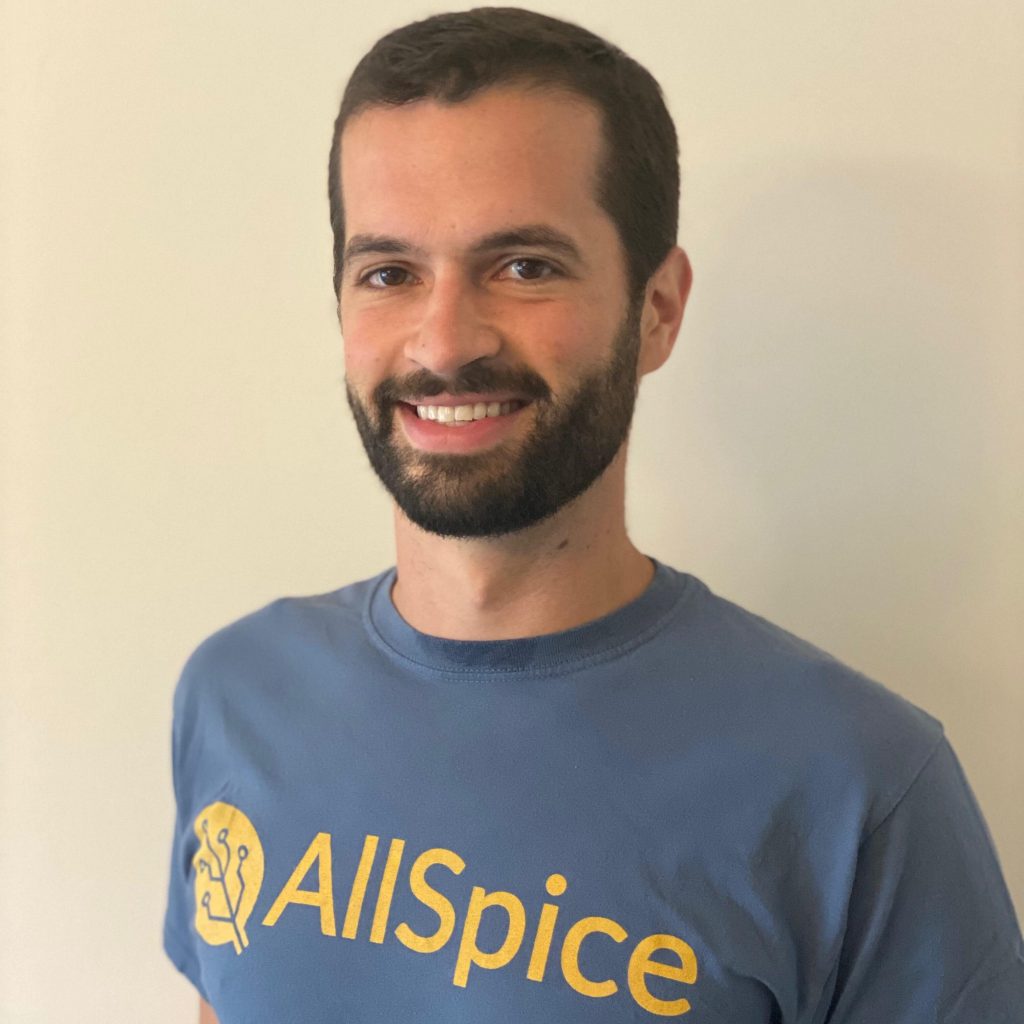Podcast: Play in new window | Download
Subscribe: Apple Podcasts | RSS

Welcome, Kyle Dumont of Allspice!
- Kyle has a background in EE and worked at iRobot.
- After that he worked at Voxel8 on the Developer’s Kit, the 3D printer that could do plastics plus circuits. You may remember a quadcopter that could fly off of the print bed.
- Using a high end milling machine, they could get 100 micron trace/space. They did this by milling out the channel and filling with silver.
- Things went quiet on the circuits front, so Voxel8 moved into rapidly printed footwear. Things like “stylized uppers”
- First printer launched was called the developers kits and was good for doing things like 3D antennas and getting blind vias for free.
- Kyle recently graduated from the new MS/MBA program at Harvard.
- He mostly took CS / Datascience classes on the technical front, because of the availability of graduate level classes. So no exposure to Horowitz or Hill, unfortunately.
- Kyle started Allspice with his classmate Valentina, as a way to make hardware design more like software.
- Building a git release for hardware designs, instead of relying on zip files. This took direct cues from his experience doing product development.
- Processes are built around the waterfall development process
- When starting the EE team at Voxel, they used GitHub
- What would you tell a new hire for using Git?
- These days, younger EEs do firmware anyway.
- How does git work?
- Git allows design revision control
- Different than Subversion, another revision control method used by Altium.
- Git holds the entire history, and only tracks the incremental changes.
- Separation between local and remote.
- Jesse Vincent’s talk at KiCon about tooling for manufacturing files
- Using Continuous Integration
- Simulation is usually super targeted, trying to get 4th order accuracy
- Atul Gowande Checklist Manifesto
- Tying footprints to MPN
- Initial focus was on teams using git with hardware designs
- Building visual red-lines, so that you can see what has changed during a design review.
- Kyle can name the likelihood of a CAD program based on industry!
- Altium building Altium365
- Explaining how a change ripples out
- Users of Git and Allspice will learn to break changes up into the most digestible changes
- JEDEC30 format
- Component information
- Pull request is analogous to the ECO process
- “Can this be done” vs “Should this be done”
- Unit testing
- How would this work with PCB manufacturing?
- Tagging to put a version on a board. Chris used to put commit numbers on PCBs.
- Check out Allspice for more info, or email Kyle directly

Hi Chris,
During the podcast you mentioned that it would be nice to have a PCB checklist that one could consult/use as a starting point before ordering PCBs. (and of course also develop a habit for using it). One of my friends has created just that, check it out here:
http://pcbchecklist.com
it has a bunch of various points for different things, and can be tailored to your own needs. It is open source, so you are free to contribute 😉